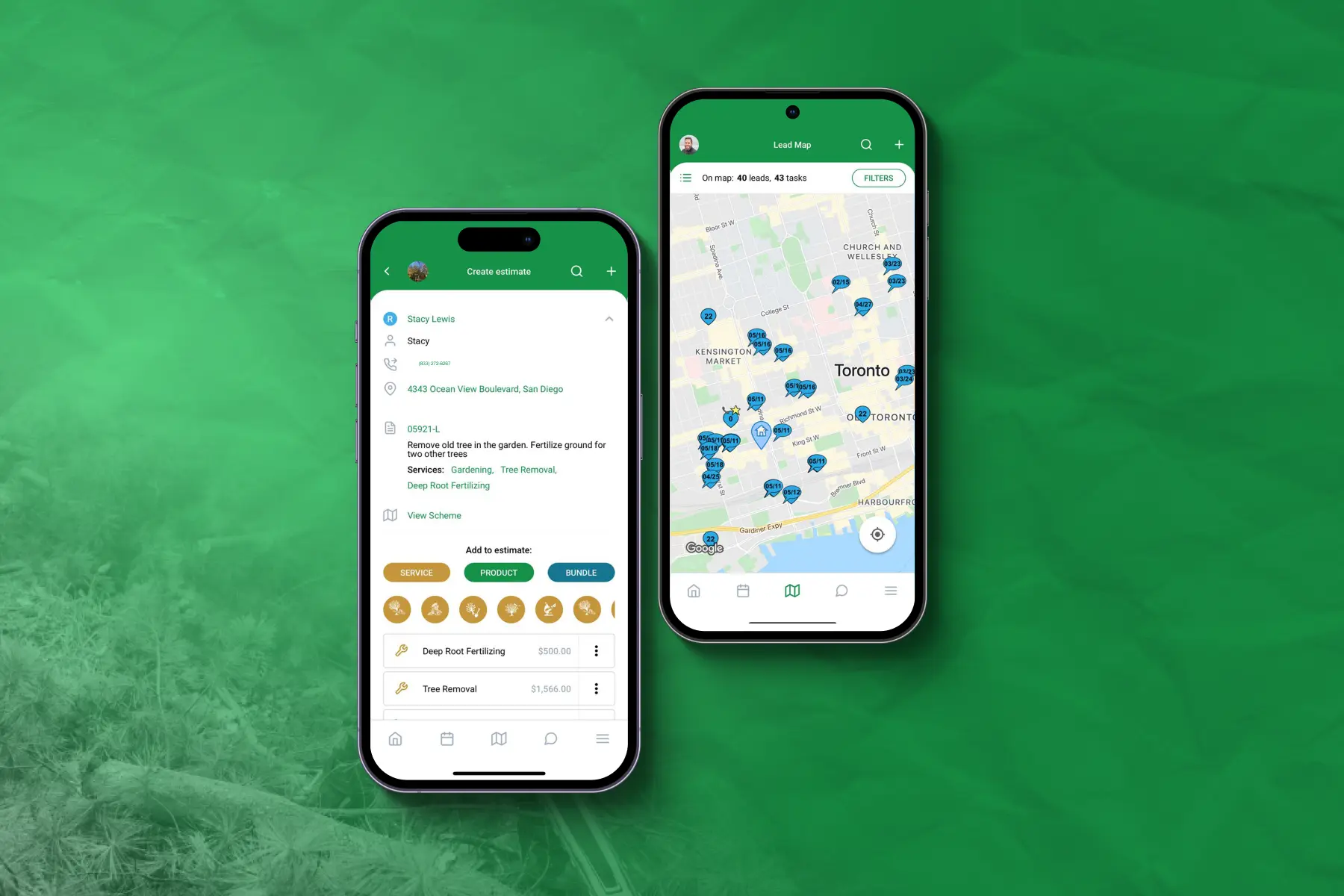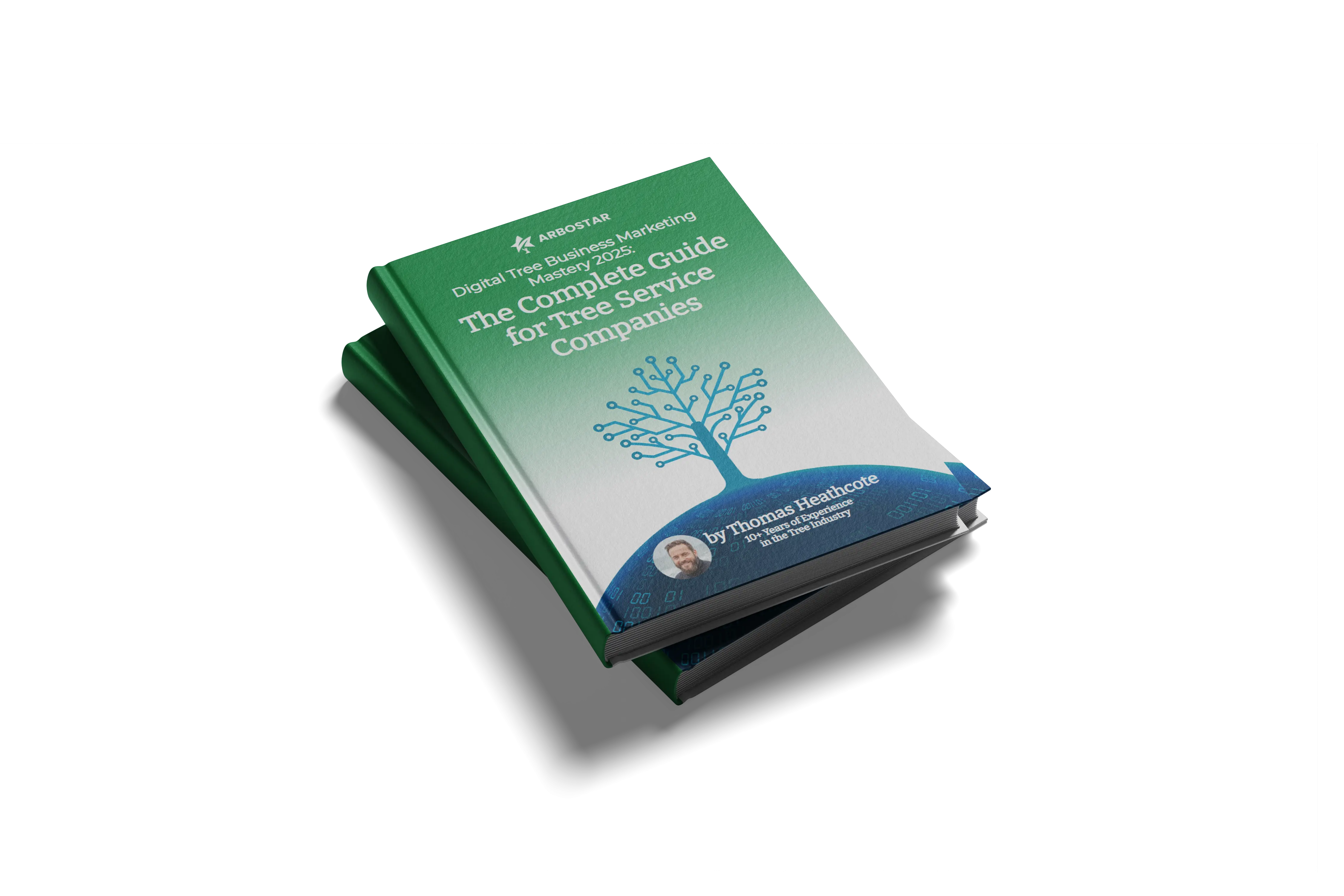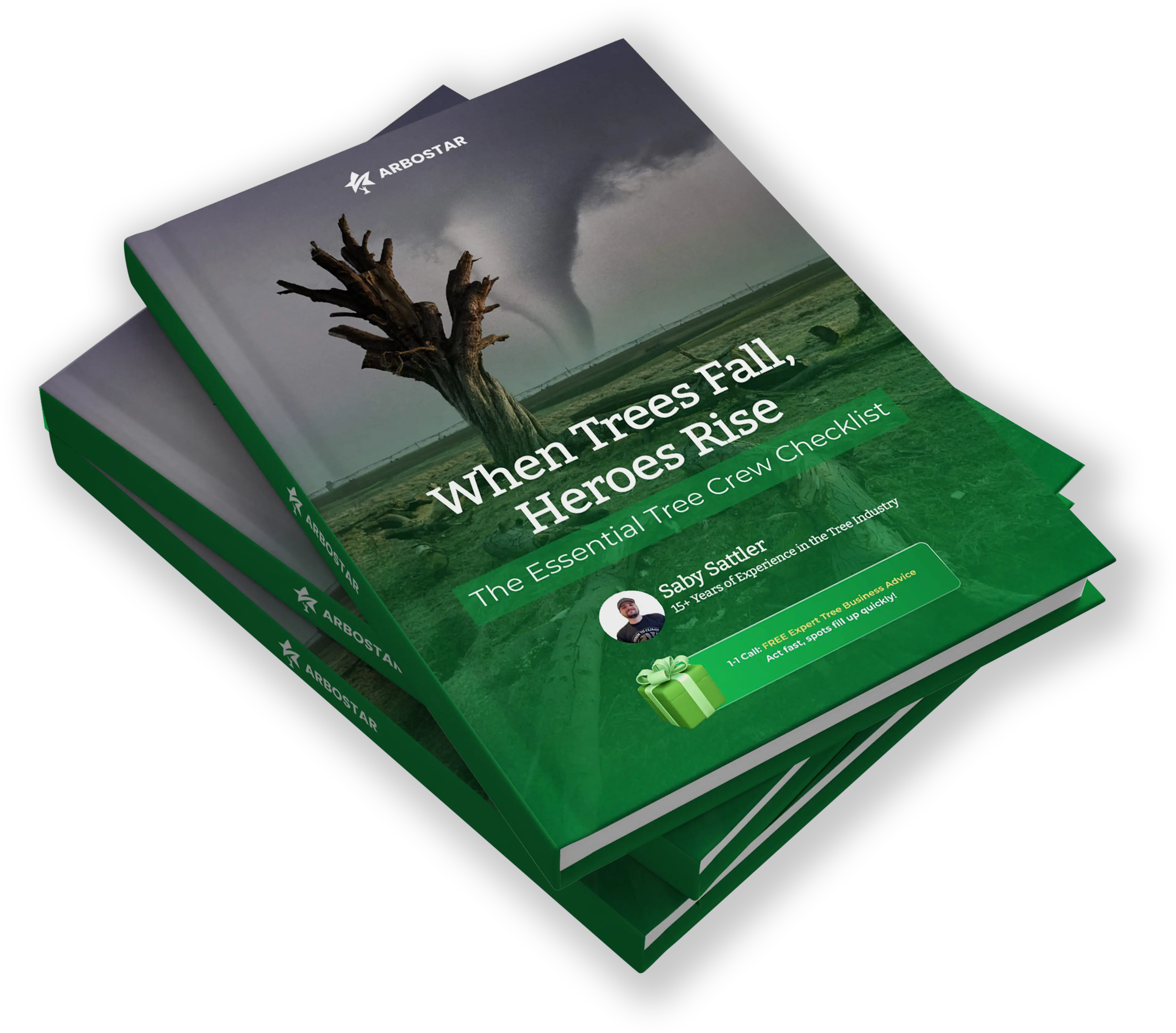Best Tools for Project Tracking

Over the years in the field of arboriculture, I swiftly grasped that tree care goes beyond nurturing seedlings and cutting branches; it entails juggling intricate timelines, assembling personnel, and coordinating that each phase of a specific project adheres to controlled quality standards. As a project manager, I’ve come to understand that not only is it necessary to have a project tracking system in place, it is imperative that it is robust enough to withstand the daily chaos that happens in the organization. My criteria for what constitutes the “best tools for project tracking” has expanded to include effective solutions to the daily chaos of managing operations.
Employing existing technology is the best approach. In my case, I would recommend ArboStar. It stands out among other project trackers because it was created specifically for arboriculture and landscaping businesses. It includes website costing, job scheduling, and customer relationship management. Having a system that talks about your industry’s lexicon is like having gold; instead of manhandling elements designed for software engineering or general commerce, you receive a solution tailored to how an arboriculturist or a landscaper actually works which is a greatly needed tool.
When considering the best tools for tracking projects, it is essential to consider the integration of the tools. It would be best if you had a tool that links with your calendar, email, or even accounting software. In arboriculture, for example, if a team is required to inspect a site, it would require integrated mapping capabilities. A decent solution will take care of this problem by presenting all of this information in a unified format. After all, a tracker project management solution is meant to streamline administrative work, not enhance it.
One more important aspect is usability. Investing in a high-performance system is pointless if employees cannot quickly get comfortable using it. In my practice, the best stories are when people understand the value of the system from the implementations: scheduling works, no deadline is missed, and project statuses become much easier to understand. For intuitive tools, the learning curve is quite low, which will make the assessment of the alternatives simpler.
In the end, the decision of which project tracker software to adopt boils down to the peculiarities of your organization spun with the general purpose of the software. For example, if getting the best value for your money is of utmost importance, then getting software with a strong budget management capability is recommended. In the event where client/ stakeholder communication is more of an issue, then ensure that the software emphasizes real-time chats, threads for tagging or commenting on tasks. If your goal is to manage and view interrelated projects at the same time, such as managing large municipal tree inventories and private estate garden renovation, then a robust online tool with a good dashboard and analytic reporting is a must.
What is project tracking?
A project tracking is defined as monitoring each and every aspect of your project such as due dates, budgets, labor and raw materials in order to complete specified goals within a certain time span. The key of effective planning tools is that timely project progress data gives you valuable information in advance so that you do not run into difficulties later. After all, in the world of arboriculture, one cannot conveniently avert a pest attack or a storm that breaks branches, right? You need a system that indicates these difficulties and aids you in coping.
What does it mean to have an effective means of monitoring the advancement of a project? It means that one is able to rely on certain metrics and milestones which can be altered at the touch of a button. For example, if your team experiences a delay in the delivery of new saplings they may note down this complication immediately. That information then trickles down into other activities: perhaps your irrigation system can only commence later or perhaps the fertilization schedule now has to be modified. A well-designed project tracking system – such as the one provided by ArboStar – ensures proper information distribution so that no one is out of the loop. Notifications or reminders issued and received in real time allow managers to reassign roles or amend deadlines in order to enhance efficiency over time.
Data Collection is the backbone of any project tracking system. Whether you are operating with simple excel sheets or renowned applications it’s imperative that accurate information is gathered in order to aid the tracking system for hours worked, tasks completed percentage and total budget spent. In Arboriculture for example, you may be entering data for the health status of areas in which new trees have been planted or for the time when hazard pruning should be done. The more quality data you have, the easier it is to track project progress and identify certain trends. Does a specific type of tree use up too much maintenance resources? Are there persistent problems with subcontractor scheduling? Good project tracking systems are able to showcase such trends and consequently allow for them to be solved.
When a project, such as a community garden renovation or a big tree planting, comes to an end, the most enjoyable aspect of project tracking for me is the reporting phase. You can go through the documented progress at this point and determine what was beneficial and what was not. Goals can be set for a new project based on this. If you have a tree care business, the tracking of the project would save you money and time down the road using a historical record. It will assist in figuring out the best course of action as every region, climate and client can vary.
It’s not an exaggeration to say that project tracking forms the basis of any project’s success. When you need to manage numerous tasks at once or when you are doing something as straightforward as tree removal, it makes sure that it is done in an orderly and evaluative manner. By implementing best practices for tracking project progress, team members are enabled to work together more effectively, issues are resolved more quickly, client satisfaction improves, and all of this while maintaining healthy, self-sustaining landscapes.
Maximize Your Tree Business Growth in 2025!
Unlock the secrets to success with our ultimate guide! The Digital Tree Business Marketing Mastery 2025 eBook is your go-to resource for staying ahead in the tree care industry. Discover cutting-edge strategies, proven digital marketing tactics, and expert insights that will revolutionize the way you attract clients and grow your business.
What’s inside?
✅ The latest trends in tree care marketing
✅ Must-know strategies for lead generation
✅ SEO, social media, and Google Business optimization
✅ How to automate your marketing and scale faster
What is a project tracker?
A project tracker can not only be just a stylish spreadsheet, rather it is a hub for multiple systems and platforms whose job is to manage various activities such as tasks completion, budgets, timelines and even watching the overall progress of the project. Over my career in the agroforestry industry that has clocked more than ten years, I’ve observed how misplaced timber data can easily escalate a well-integrated process into complete confusion. To avoid this, an appropriate project tracker can help you track project progress effectively and keep everything in place.
Look at it this way, a project tracker functions as a cockpit of an aircraft. It is quite lively to picture yourself as the head of a city based tree census project. The census requires biodata including the number of trees and other relevant information like the different species of trees, the age, their health, maintenance and many others. That is not all, you have different teams, or a fleet, or even a toolbox which all require simultaneous oversight. A project tracker has the unique ability to accumulate all this data and simplify projects tracking by showing the current status of each work item, who is working on a specific task, and if any milestones are likely to be missed—all in just a single view.
When it comes down to project trackers, there’s free boards or charts whether you prefer Gantt charts which provide a timeline or Kanban boards where tasks can be marked as To Do, In Progress, and Done. Personally, I think Kanban boards are great since they make everything more straightforward in terms of what is being done and what needs to be done. Meanwhile, Gantt charts are amazing when it comes to executing longer tasks that are intricate and sophisticated. Aside from that, the idea is always the same; use any visual tool of your preference, there’s no wrong way to go about organizing your projects.
However, it’s important to note that not all project trackers suit all types of people. For instance, If you happen to work in Arboriculture, Horticulture, and Landscaping, look into sites like ArboStar. It gives the users all the specific features that tree care organizations demand such as managing equipment utilization, on-site estimation scheduling, and treatment records documentation. Getting all of those features on a single platform makes a huge difference since it saves up time and eliminates the majority of errors. You could put the Pesticide application alongside who you're talking with and the rest of your routines.
Scalability also matters, especially for mid-to-large operations. You may commence with only a couple of projects every month but as you grow your reputation, you will find yourself having to handle quite a few contracts in different neighborhoods or even in different cities. Any reliable project management solution should be able to grow in accordance with your requirements. That means it is able to support an increasing amount of users, tasks, and data points concurrently without degradation of performance or manageability. It should also provide a diverse reporting feature to be able to summarize an engagement. For example, you might wish to know how many hours you have been working on root aeration this quarter, or how various crews compare in productivity.
Problems Solved by Project Tracking Tools
| Common Issue | Impact on Project | Solution via Project Tracking Tool |
|---|---|---|
| Missed deadlines | Delays, client dissatisfaction | Alerts, calendar integrations |
| Budget overruns | Loss of profit | Real-time cost tracking |
| Equipment double-booking | Inefficiencies | Asset management features |
| Lack of crew communication | Errors, slow progress | Team messaging and shared dashboards |
| Unforeseen delays (e.g., weather) | Need to reassign work quickly | Rescheduling via drag-and-drop tools |
How to track project progress?
Learning the art of keeping track of projects at work is of utmost essential especially when one focuses on efficiency and outcome, this is very important in arboriculture where climate, time of year, the state of the plants, and client’s aspirations can change quickly. Having spent over a decade in strategizing and implementing tree care practices, I have perfected a systematic method that remains productive irrespective of the unpredictability that nature has in store.
1. Set Clear Targets And Goals
We all know that projects need target areas or goals in order to succeed. First identify what your objectives are. For example, you might want to plant 200 trees in the school district or want to prune dangerous branches over some park located in the city. Now divide that one large goal into smaller sequential tasks. For instance, these include: Applying for permits, purchasing seedlings, soil preparation, and arranging planting teams. This step can be helpful in defining precisely where you will make progress.
2. Use A Comprehensive Software
After building clear objectives and tasks for your goals, now you must build a solid infrastructure and software that will manage everything. I have tried out a number of tools over the years – from basic spreadsheets to generic online tools and specific applications designed for arboriculture. For small projects, spreadsheets can be a great tool, but for larger tasks, working with spreadsheets can be quite a pain. Then again, there are tools that provide Gantt charts and Kanban boards, which help break out your tasks. To compromise on timing, I use ArboStar because it is more familiar and knows how to do tree work and still consider the downtime of equipment or scheduling client appointments. The bottom line, however, is that you will have to determine the tools used by your entire team.
3. Create a Checklist and Regularly Update It
When considering how to keep track of projects at work, remember that constant attention and regular updates are critical for ensuring progress. And in this regard, I recommend developing a cadence for your team’s check ins — it can be weekly, bi-weekly, or whatever works for you. These meetings (face-to-face or online) are the best venues to assess progress against the set targets, identify new points of concerns and if there are changes in priorities, redefine the tasks as necessary. For example, in the arboriculture industry, an unexpected outburst of pests might change your schedule of treatments. But through regular check-ins, it is easy to inform of any changes required and fix them.
4. Save And Store Every Aspect Of The Project
Trust any method of tracking, and you need data. Whether they are hours spent on the job, materials spent, tasks done, etc., record everything as you go along. If the task is pruning of trees and like jobs, measure how many trees could be done in a day and how much time was consumed and what difficulties arose. There is also information needed in establishing whether there was a lapse or a deficit of some resources, in setting references for future trustworthy projects. And this is useful when calculating quotes for a project or selecting an appropriate ratio of resources for similar tasks in the future or calculating resource requirements for later similar tasks.
5. Utilizing Visuals Tools and Alerting Features
In my view, tasks’ schedules, budget allocation, along with the rest of the essential information, can be pretty opaque unless given a visually intuitive look like color-coded Gant charts or traffic-lights. Moreover, these days, in addition to project management apps’ optimization, most of them allow you to customize notifications too. As an example, you might want to be alerted when a certain task is close to its deadline or when someone on the team starts an issue. Such a strategy enables for the disarming of many issues so that the initiative is always sustained.
6. Changing To Satisfy Client’s Demands And Improving
Even the best laid-out plans cannot guarantee success due to unreliable factors such as sudden bad weather, equipment failure to even late shipments. The beauty of a dynamic project tracking system is being able to pivot as required. Maybe you redirect the teams to another location while waiting for the late shipment to come in or there is extra budget left in one task to cover the loss in another. With this, the upshot is that you are always progressing. Also, at the end of the project, conduct an analysis of the whole event. Check what has been working well and which areas recommend polishing. This constant refinement is what enables for smooth operations similar to those of a well edged and balanced orchard.
At this workplace, our ability to actively engage in project management allows us to limit unnecessary expenditure, eliminate the need to take unnecessary risks, and perfect the outcome of an undertaking. In my opinion, it’s about much more than simply being on time, it’s about being trustworthy and skillful at what you do. The best arborists with fulfilling customers are great because they know how to manage projects. Always delivering results is what builds one’s reputation. Therefore, once you combine the right mindset, the right tools, and a willingness to adapt, you’ll achieve a finely tuned process that maximizes your happiness and every garden’s health that you work on equally.
Why ArboStar is a Game-Changer
- Simplifies Scheduling Team Coordination – Keep projects on track with easy-to-use planning tools.
- Enhances Financial Management – Get better control over payments and expenses.
- Strengthens Customer Relationships – Ensure smooth communication and follow-ups.
- Improves Equipment Resource Tracking – Optimize the use of tools and vehicles.
- Supports Business Growth – Provides valuable insights to help you scale.
Why is tracking project progress important?
Being a professional arborist, I’ve treated trees in people’s backyards and even worked on funding efforts designed to turn whole urban areas into forests. During that process, I have come to understand that one of the things that will almost always determine whether or not you will be able to complete a particular undertaking of any scale is your ability to effectively control that undertaking. Tracking a project is not just another task; it is part of the process where completion of goals and objectives are planned to be achieved within the targeted timeframe and which is greatly necessary in any field where there is an element of nature’s surprise.
1. Curbing Scope Creep
Scope creep occurs when a client insatiably expands the project's needs. For instance, a customer might request a simple pruning around the power lines and midway through the job, they agree to some extra work of pruning a few limbs on another site. Extra work such as this can easily push timelines and budgets off track if they are not properly tracked. Keeping track of changes to the plan allows for costs or timelines to be adjusted in real-time which ensures all stakeholders are aware of what the deliverable will be so that there are no overextensions or hidden costs.
2. Take Action Early
Despite being little, in arboricultural menial things like a pest infestation or dirt contamination could escalate into a much larger problem. In arboriculture, all trees are considered valuable and no scope or clock should be wasted on senseless projects. If a project is monitored properly, a faint signal of a problem being logged usually ends up being a red flag. Add in real-time alerts or team notifications and you're able to change schedules or engage specialists in order to tackle problems to avoid end of the project drama. In many instances, being able to contain problems allows for the possibility of preserving an aging tree instead of having to remove it entirely.
3. Client and project management
Well-structured, integrated project tracking tools build accountability by making everyone’s responsibility clear and their progress visible. This is like a collective responsibility. If a section of the project is lagging behind, it becomes obvious which part of the process is at fault. Instead of making accusations, it is possible to determine the source of the problem, which could for instance be a faulty chipper and resolve it. Such openness generates trust not only internally amongst employees and externally with clients, as there is visibility on the progress made.
4. Higher worker morale and customer satisfaction
Therefore, anybody who has ever had an opportunity to work on large landscape or tree care projects with clients understands that communication is one of the elements of the deal or can win or lose a project. Clients require assistance when trying to ascertain if their new orchard will be completed on time or searching if a property-wide pruning fits within the necessary budget. Unless and until there is ‘project tracking’ updating clients on the projects’ status could be long and tedious processes. This enables smooth collaboration as feedback is easily available as everyone is on the same page and fixes to any roadblocks can be reached swiftly.
5. Developing Continued Effectiveness
Project tracking is such a beneficial aspect of a project, and its trade-off is worth it as well - the data collected is far better than the time used in tracking. After waiting for a couple of months, say even a year, you will have an in-depth record of the execution of different kinds of projects, the estimated time they required, and the roadblocks that were faced. For an arborist, this data might illustrate patterns—like how certain tree species require more frequent follow-up visits or how certain types of equipment fail under specific conditions. With this in mind, you start to build a data set that allows you to keep polishing your processes, give underestimations of time for new jobs and attain higher accuracy in the training of the crew.
6. Adapting Your Instruments
I often highlight ArboStar as a great example of a platform that supports these goals without overwhelming the user. By maintaining a single hub for scheduling, CRM, job costing and asset management, it is able to store key details related to arboriculture in one location. In this regard, recording progress of the work is easier since there is no need to switch between various programs. Furthermore, the system supports attaching photos, diagrams, and documents to each project stage, creating a comprehensive digital project history, from site visits, safety checks to billing. This enhances clarity, minimizes errors and improves collaboration among people.
When considering how to track a project, the answer always comes down to control, clarity, and continual improvement. Instead of having to deal with the issues as they appear, you always take the proactive approach. You anticipate trouble, approach your team and your customers openly and consistently produce results that enhance your work-related reputation. Even in the unpredictable world of trees and landscapes, properly organized projects allow you to adapt swiftly. As a result, this level of order allows arborists and other industry professionals to approach more complex initiatives, safe in the knowledge that whatever nature or clients throw, they will be able to manage.








